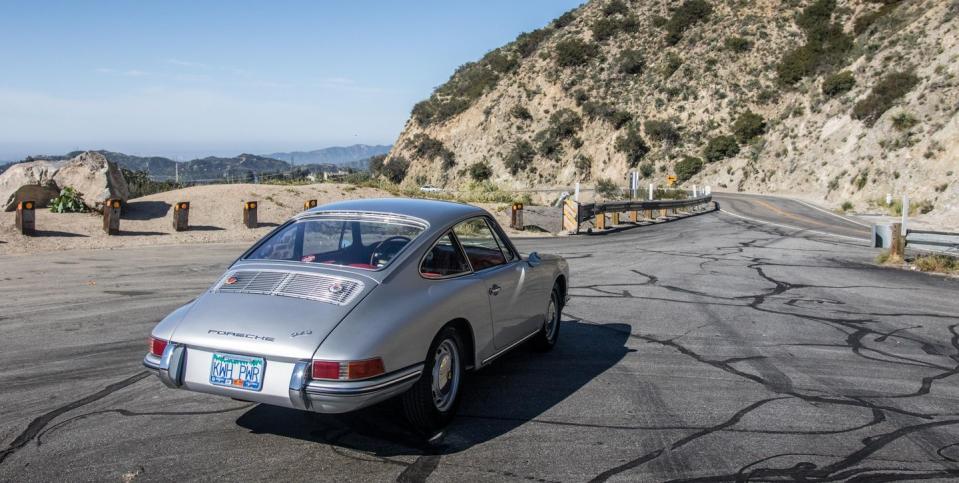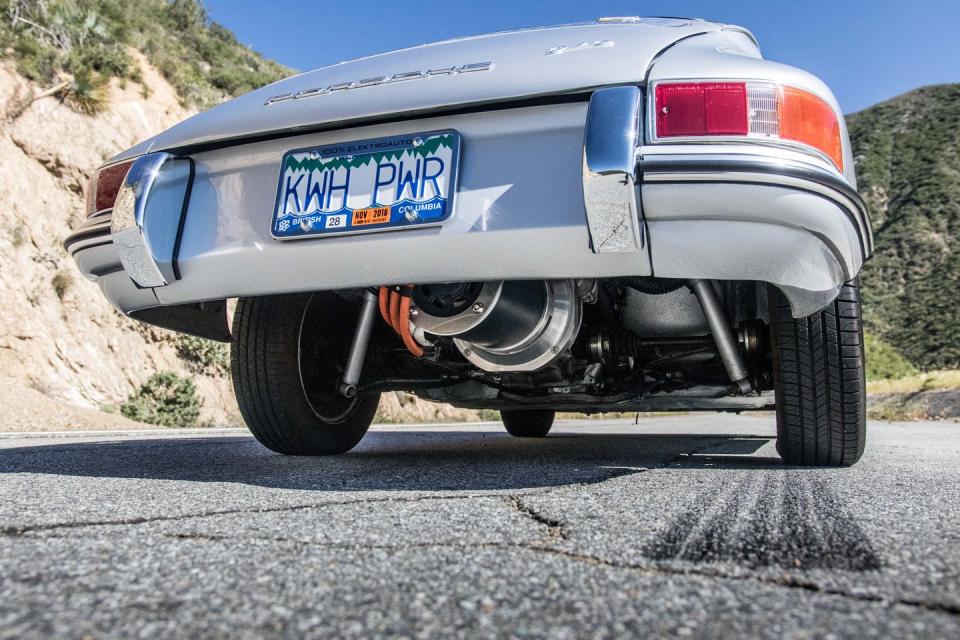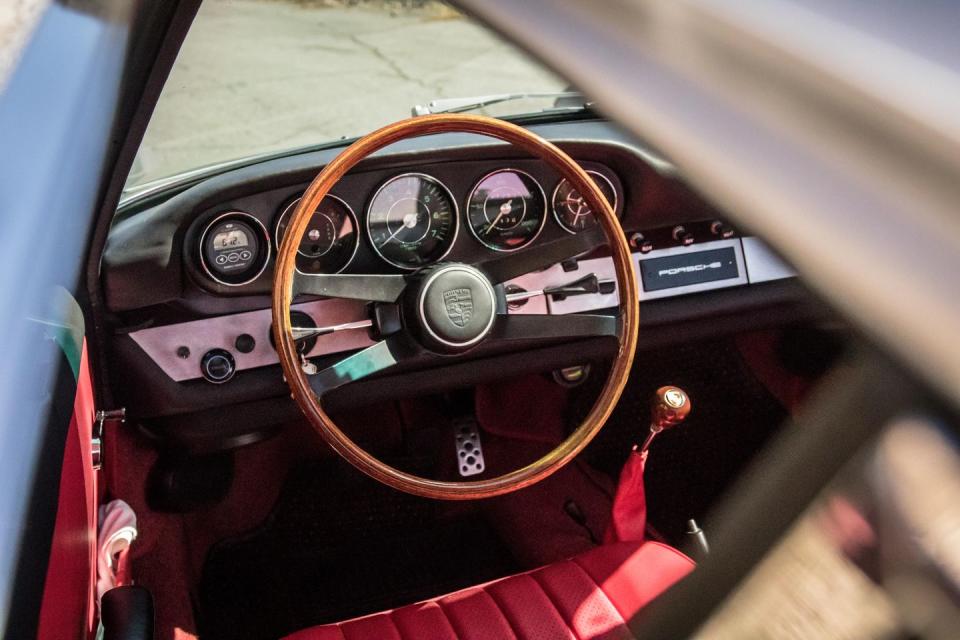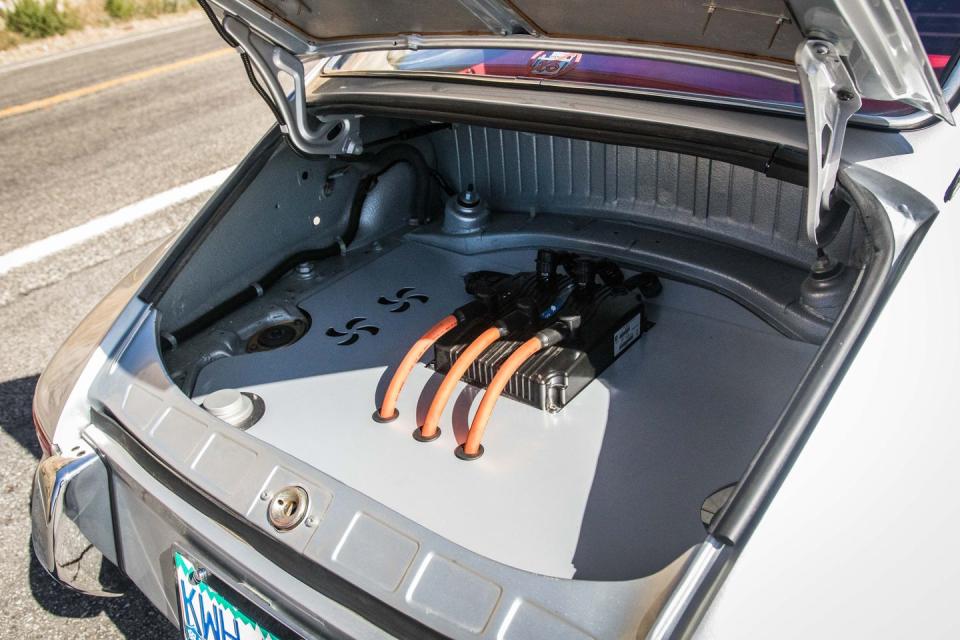Here's What It's Like to Drive an Electric Car with a Manual Transmission

At this year's SEMA show, electric powertrain swaps captured the public's attention. When the wraps came off Ford's Mustang Lithium concept, produced in cooperation with battery company Webasto, any complaints about a lack of V-8 rumble were assuaged by the specs: a dual-core electric motor pumping out 900 horsepower and 1000 lb-ft of torque. That got our curiosity, but a six-speed manual transmission? Now Ford has our attention.
However, there were some in the EV world who viewed the Lithium's stick shift with the same disdain as if the blue oval had somehow managed to fit a carburetor to the powertrain. Most production electric vehicles make do with a single-speed transmission. Given the acceleration possible from any dual-motor Tesla vehicle, adding a manual transmission into the mix is choosing to be slower. It's an anachronism.
But anachronisms can be fun. Not everybody wants to have a smartwatch. Sometimes you want to wear something you need to windup every day, so to speak. Which brings us to the Angles Crest highway, and an electric-swapped 1967 Porsche 912 with a five-speed gearbox.

As we can see with another Porsche EV, the Taycan, having a transmission does improve efficiency and acceleration. In the case of the Taycan, with its two-speed rear-axle transmission, a lower gear improves acceleration while a higher gear extends highway cruising range.
The tradeoff is weight, and durability. Tesla's next-generation Roadster was originally intended to come with high and low gears, but the tremendous amount of torque reportedly kept eating gearboxes. Further, in a production car, why not remove the weight and complexity of a multi-gear transmission, and just add a few more batteries?

In the case of this '67 restomod, packaging was certainly part of the decision to retain the dog-leg five-speed. The work was performed by EV West, a speed shop dedicated to preserving the spirit of anything they swap to electric power. That meant introducing an electric motor to essentially swap right in where the flat-four used to sit. A battery pack was fitted up front, all done without cutting sheetmetal.

In the Taycan, the efficiency savings of using a two-speed gearbox are relatively minor as compared to a single speed. Further, electric motors have a completely different character than what most people are used to. In a conventional combustion engine, peak power and torque are just that – peaky. Thus, the need for multi-speed transmissions to keep the engine either in its most-powerful or most-efficient ranges.
The close-ratio gearbox boasted of in many track-oriented machines of the past speaks to this peakiness. For racing applications, you want to keep the engine on the boil, high up in the rev range. Turbocharged and supercharged engines have more flexibility, as do larger displacement V8s. In a modern 5.0L Mustang, you can pretty much leave it in third gear on any twisty road, and rely on eight-cylinder grunt to claw your way out of corner exits.

 Yahoo Autos
Yahoo Autos 